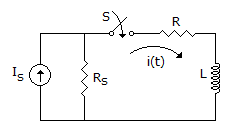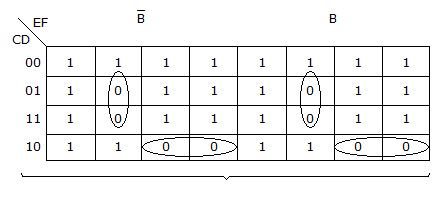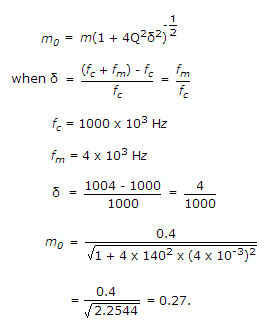Electronics and Communication Engineering - Exam Questions Papers
Exercise : Exam Questions Papers - Exam Paper 5
- Exam Questions Papers - Exam Paper 12
- Exam Questions Papers - Exam Paper 22
- Exam Questions Papers - Exam Paper 21
- Exam Questions Papers - Exam Paper 20
- Exam Questions Papers - Exam Paper 19
- Exam Questions Papers - Exam Paper 18
- Exam Questions Papers - Exam Paper 17
- Exam Questions Papers - Exam Paper 16
- Exam Questions Papers - Exam Paper 15
- Exam Questions Papers - Exam Paper 14
- Exam Questions Papers - Exam Paper 13
- Exam Questions Papers - Exam Paper 1
- Exam Questions Papers - Exam Paper 11
- Exam Questions Papers - Exam Paper 10
- Exam Questions Papers - Exam Paper 9
- Exam Questions Papers - Exam Paper 8
- Exam Questions Papers - Exam Paper 7
- Exam Questions Papers - Exam Paper 6
- Exam Questions Papers - Exam Paper 5
- Exam Questions Papers - Exam Paper 4
- Exam Questions Papers - Exam Paper 3
- Exam Questions Papers - Exam Paper 2
16.
In the following circuit, the switch S is closed at t = 0 The rate of change of current  (0 +) is given by
(0 +) is given by

 (0 +) is given by
(0 +) is given by
Answer: Option
Explanation:
At t = 0, inductor acts like a open circuit.
We know  at t = 0+, inductor path is open circuit
at t = 0+, inductor path is open circuit
V = Is.Rs (at t = 0+)
Thus 
17.
 convert into spherical co-ordinates.
convert into spherical co-ordinates.Answer: Option
Explanation:
Spherical :
Ar = A. a r = .sinθ.sinφ =
.sinθ.sinφ =
Aθ = A. a θ = .cosφsinφ
.cosφsinφ
= 2 sin2φ
Aφ = Aa φ = cosφ = 2 sinφ
cosφ = 2 sinφ
∴ A =  a r + 2sin2φa θ + 2sinφaφ
a r + 2sin2φa θ + 2sinφaφ
A = 2sinφ[sinθ tanφ a r + sinφa θ + aφ].
18.
Consider the following program segment written for 8085 based system
The contents of accumulator is :
LXI SP, FFFFH
MVI A, FFH
MOV BB, A
K: DCR B
PUSH HL
JNZ K
INR A
LXI H, FFCEH
CPI 20H
LHLDThe contents of accumulator is :
Answer: Option
Explanation:
Since contents of HL register pair are unknown and are continuously ''PUSH''ed on the stack; retrieval of the same will result in ''Indeterminate'' data.
19.
The reduced form of the function
Y(A, B, C, D, E, F) = ∑m(0, 1, 2, 3, 4, 6, 7, 8, 9, 12, 14, 15, 16, 17, 18, 19, 20, 22, 23, 24, 25, 28, 30, 31) is given by:
Y(A, B, C, D, E, F) = ∑m(0, 1, 2, 3, 4, 6, 7, 8, 9, 12, 14, 15, 16, 17, 18, 19, 20, 22, 23, 24, 25, 28, 30, 31) is given by:
Answer: Option
Explanation:

Y = (A + D + E + F)(A + C + D + E).
20.
A 1000 kHz carrier wave modulated 40% at 4000 Hz is applied to a resonant circuit tuned to a carrier frequency and having Q = 140. What is the degree of modulation after transmission through this circuit?
Answer: Option
Explanation:
Resulting depth of modulation

Quick links
Quantitative Aptitude
Verbal (English)
Reasoning
Programming
Interview
Placement Papers

